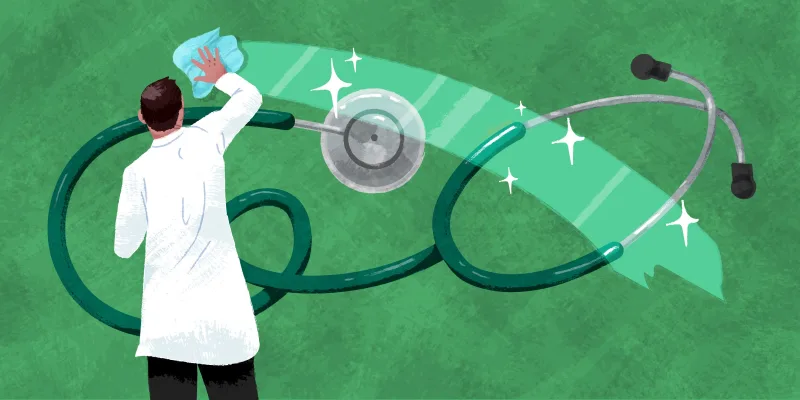
Image by gettyimages
Case Studies
Consider the following famous people—all who have something in common:
- John Belushi (Actor): John was a well-known comedian and actor whose magnetic personality secured him a large following. We all remember him from the epic film “Animal House,” in which his character’s eating and drinking habits disgusted his preppy peers (and all of the ladies on campus)—who else could drink beer as quickly and efficiently? In real life, things were pretty similar: John was prone to drinking bouts and street drug use. Unfortunately, John’s lifestyle cost him his life. On March 5, 1982, he was found dead in his hotel room at the Chateau Marmont on Sunset Boulevard. His Medical Examiner listed the cause of death as a lethal injection of heroin and cocaine. John is interred in Abel’s Hill Cemetery in Martha’s Vineyard, Massachusetts.
- Chris Farley (Actor/Comedian): Chris was another well-known actor and comedian whose skits about his ever-increasing girth became his trademark. He was a favorite on Saturday Night Live. Farley, not unlike many other successful actors, had a problem with alcoholism and drug abuse. On December 18, 1977, Chris was found dead in his Chicago apartment; his cause of death at autopsy was accidental overdose of cocaine and heroin, with coronary arteriosclerosis as a contributing factor. In the long run, his eating habits and substance abuse ended his life prematurely.
These two members of the Actor’s Guild had one thing in common: drug abuse and eventual overdose.
What is classified as “drug overdose”?
Technically, it is the absorption of a chemical substance intravenously, orally, or through the nasal mucosa in doses significantly higher than intended or prescribed, which ultimately disturbs homeostasis to the extent that it causes severe illness or death.
If caught in time, these individuals would have been brought to our emergency rooms and classified as overdose (OD) or chemical poisoning cases.
It is important to note, however, that a drug overdose may be either intentional (e.g., suicide or homicide) or unintentional (i.e., accidental).
Assumptions about intention could affect our patient approach and cause us to initiate the wrong treatment.
For example, consider the following accidental cases:
- Head trauma with associated alcohol ingestion;
- An elderly patient misreading a prescription because of poor vision or because they have misplaced their reading glasses;
- Young children visiting grandparents or other senior citizens and ingesting a life-threatening dosage of medication because the adult has carelessly loaded their medication box for the week and dropped a pill, or left medication in an accessible place. (These are among the most tragic incidents because the child, the parents, and the grandparents all suffer the consequence: hospitalization and/or death from something as innocuous as a beta blocker. Medications left unattended and within the reach of children are “loaded guns” and have the capacity to alter a life forever.)
Which drugs are most commonly associated with overdose?
- Barbiturates lead the list and were most popular in the early 1990s. In small amounts, they produce a state of intoxication similar to alcohol ingestion. Symptoms of overdose include slurred speech, loss of motor coordination, and impaired judgment. Depending on dose, frequency, and duration of use, the abuser can rapidly develop dependence (both psychological and physical). The margin of safety between an effective dose versus a lethal dose is narrow. Barbiturates and muscle relaxants or benzodiazepine are used for capital punishment.
- Narcotics, from the Greek word for stupor, include a variety of substances that induce sleep (a state of narcosis). Among the many used in the United States are opium, opium derivatives, and synthetic substitutes. The usual routes of ingestion are oral, transdermal, and injection (as well as those recreational drugs that are snorted, skin popped, etc.). When observing a user, one will notice watery eyes, runny nose, excessive yawning, sweating, restlessness, irritability, loss of appetite, tremors, sneezing, severe depression, vomiting, increase in heart rate and blood pressure, spasms, and kicking movements. As noted in the case studies at the beginning of this article, cocaine and heroin have been huge contributors in terms of accidental deaths, largely due to cocaine’s ability to create tachycardias and hypertension, which ultimately cause cardiac arrest or stroke. Heroin overdoses are often caused by “bad batches,” or doses purchased on the street, which lead to cardiopulmonary collapse.
What are the general drug overdose symptoms?
A drug overdose will have a systemic effect that represents an increased action of the therapeutic dose. Overdoses exacerbate a medication’s side effects to extreme levels, as well as create additional signs and symptoms that are not described in the accompanying drug literature. When the victim of an overdose has other medical modalities—such as heart disease, hypertension, hypotension, diabetes, renal disease, etc.—the overdose can cause severe changes in their cardiac, pulmonary, or renal systems and can result in death unless treated immediately. Unfortunately, the receiving hospital emergency room may not have sufficient data to determine the causative effect (e.g., there may not be witnesses, drugs, or drug paraphernalia at the scene) and some of the signs that indicate causative drugs or etiology might be missed. It is imperative to know that healthcare professionals, regardless of their titles, do not possess crystal balls and absent contextual information, the patient may become comatose or expire.
The astute medical provider will do the following:
- Look carefully at the presenting vital signs and monitor them at 15-minute intervals for change. The vital signs may present as increased or decreased; when the patient is in an advanced stage post-ingestion, vital signs may be absent altogether.
- Look carefully for associated signs and symptoms—e.g., sleepiness, confusion, and coma. It is imperative, also, to remember that as these signs and symptoms occur, the gag mechanism may be absent, causing the patient to regurgitate his/her stomach contents, thereby creating a metabolic and pulmonary emergency to add to the stress of recovery.
- Maintain an efficient or protective airway to prevent additional complications.
- Check the patient’s skin—on presentation, skin may be moist and clammy, or dry and warm.
- Monitor respiratory status. It may change rapidly with sudden appearance of trismus, stridor, wheezing, or apnea.
- Check for gastrointestinal symptoms. These can include nausea and vomiting, severe abdominal cramping, diarrhea, and generalized abdominal pain. Mesenteric ischemia may be a causative effect due to the circulation problem inherent in the overdose.
- Check to see if the patient is hypovolemic due to blood expelled in vomit (or in a bowel movement).
- Consider a referral and treatment for shock, if necessary.
- Consider the possibility of renal failure and hepatic failure (I have personally seen both) due to ingestion of large amounts of otherwise therapeutic drugs.
In closing, this subject is not seasonal; it can happen at any time, in any location. As a healthcare provider, it can be helpful to review materials related to toxicology prior to treating overdose cases to better prepare yourself. Remember, this is not an urban problem nor a gendered problem nor a problem associated with economic status. There are, however, factors associated with age to consider in your treatment: remember that the very young and the very old are at an increased risk of mortality.
Robert M. Blumm, MA, PA, PA-C is an author, national conference speaker, and suture workshop director. He is the former liaison for the American Association of Physician Assistants and the American College of Surgeons, as well as the past president for the Association of Plastic Surgery Physician Assistants. He is on the editorial board at Clinician1 and Advance for NPs and PAs.







